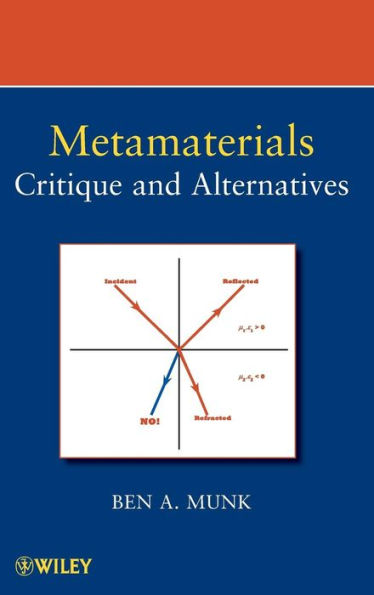Table of Contents
Foreword.
Preface.
Chapter 1: Why Periodic Structures Cannot Synthesize Negative Indices of Refraction.
1.1 Introduction.
1.2 What Currently is Assumed about Veselago’s Medium.
1.3. Fantastic Designs Could be Realized if Veselago’s Material Existed.
1.4. How Veselago’s Medium is Envisioned to be Synthesized Using Periodic Structures.
1.5. How Does A Periodic Structure Refract.
1.6. On the Field Surrounding an Infinite Periodic Structure of Arbitrary Wire Elements Located in One or More Arrays.
1.7. On Increasing "Evanescent" Waves: a Fatal Misconception.
1.8 Preliminary Conclusion: Synthesizing Veselago’s Medium by a Periodic Structure Is Not Feasible.
1.9. On Transmission Line Dispersion: Backward Traveling Waves.
1.10. Regarding Veselago’s Conclusion: are There Deficiencies?
1.11. Conclusions.
1.12. Common Misconceptions.
References.
Chapter 2: On Cloaks and Reactive Radomes.
2.1. Cloaks.
2.2. Reactive Radomes.
2.3. Common Misconceptions.
2.4. Concluding Remarks.
References.
Chapter 3: Absorbers with Windows: Absorb at Some Frequencies While Transparent at Others. also Rasorbers.
3.1. Introduction.
3.2. Statement of the Problem.
3.3. Concept.
3.4. Conceptual Designs.
3.5. Extension to Arbitrary Polarization.
3.6. The High Frequency Band.
3.7. Complete Conceptual Rasorber Design.
3.8. Practical Designs.
3.9. Other applications of traps: multiband arrays.
References.
Chapter 4: On Designing Absorbers for Oblique Angle of Incidence.
4.1. Lagarkov’s and Classical Designs.
4.2. The Salisbury Screen.
4.3. Scan Compensation.
4.4. Frequency Compensation.
4.5. The Circuit Analog Absorbers.
4.6. Other Designs: Comparison and Discussion.
4.7. Conclusion.
References.
Chapter 5. The Titan Antenna: An Alternative to Magnetic Ground Planes.
5.1. Introduction.
5.2. Layout of the Antenna.
5.3. On Double-Band Matching in General.
5.4. Matching of the Sleeve Elements.
5.5. Further Matching: The Main Distribution Network.
5.6. The Balun.
5.7. The Radiation Pattern.
5.8. Something that Sounds Too Good To Be True, It Usually Is!
5.9. Efficiency Measurements.
5.10. A Common Misconception.
5.11. We Put the magnetic Ground Plane to Rest!
5.12. Conclusions.
References.
Chapter 6: Summary and Concluding Remarks.
6.1 Background.
6.2 The Features of Veselago’s Material.
6.3 What Can a Periodic Structure Actually Simulate?
6.4 Did Veselago Choose the Wrong Branch Cut?
6.5 Could we Ever Have a Negative Index of Refraction?
6.6 Could Veselago Have Avoided the Wrong Solution?
6.7 So What Came Out Of It?
6.8 Is Publishing the Ultimate Goal in Scientific Research?
6.9 What Excites a Scientist?
6.10 How Far Have We Gone in Our Self-Deception?
6.11 But Didn’t Anyone Suspect Anything?
6.12 How Realistic Are Small Arrays?
References.
Appendix A: The Paper Rejected in 2003.
A.1. Comments Written in 2007 Concerning My Rejected Paper Submitted in 2003.
A.2. The Paper Rejected in 2003.
Appendix B. A Cavity-Type Broadband Antenna with a Steerable Cardioid Pattern.
B.1. Introduction.
B.2. Design 1.
B.3. Design 2.
B.4. Development of Design 2b.
B.5. Conclusion.
References.
Appendix C: How to Measure the Characteristic Impedance and Attenuation of a Cable.
C.1. Background.
C.2 Input Connector Effect.
C.3. Do the Formulas Hold in the Smith Charts?
C.4. How to Measure the Cable Loss.
Reference.
Appendix D: Can Negative Refraction be Observed Using a Wedge of Lossy Material?
D.1. Introduction.
D.2. Refraction for Planar Slabs.
D.3. Wedge Shaped Dielectric.
D.4. Asymmetric Aperture Distributions in General.
D.5. Conclusion.
References.
Index.




